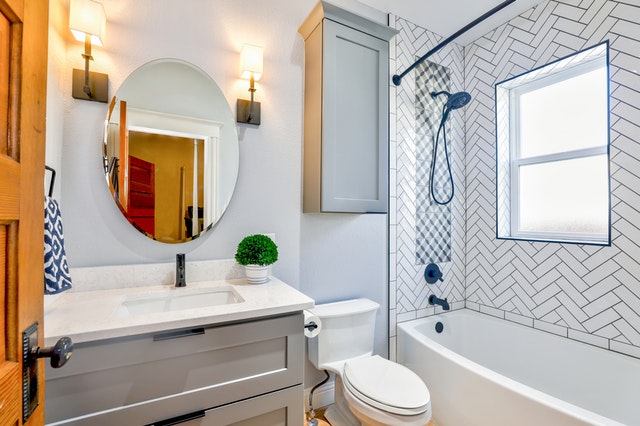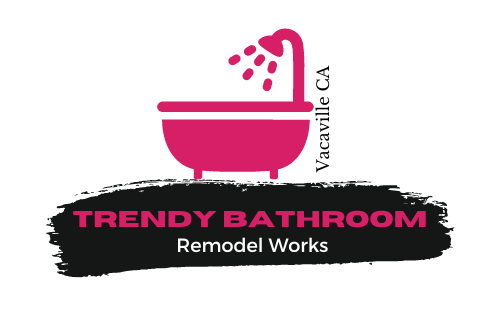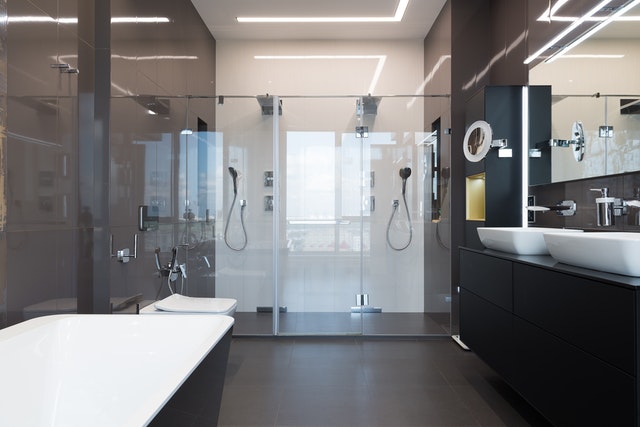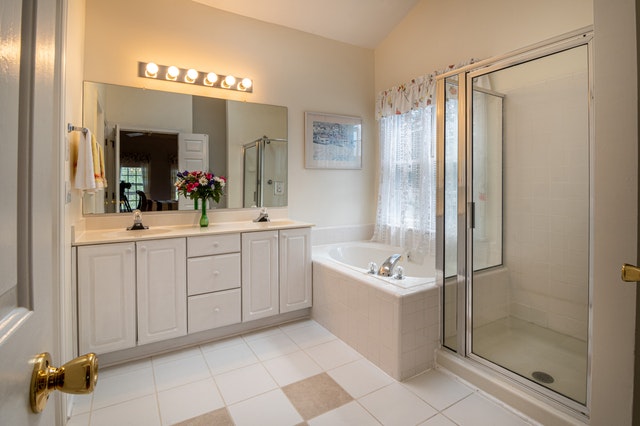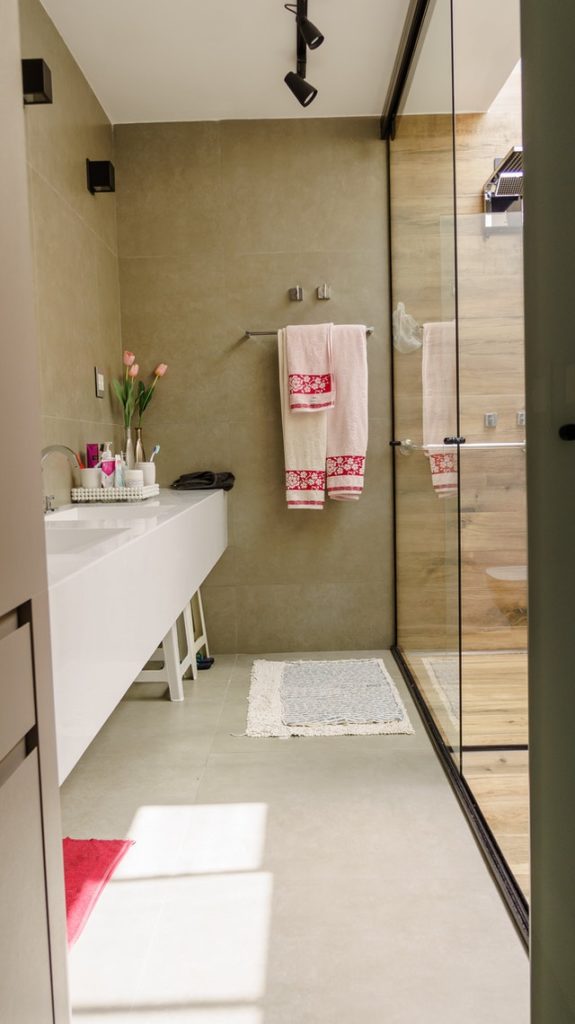- Versatility: The room must serve variety of uses, from bathing children to accommodating visiting guests.
- Durability: All materials must be selected for long life, have good but neutral looks, and be able to stand up to hard use.
- Serviceability: The room must be easy to maintain
- Compactness: In most houses space is an issue, so the family bath cannot be any larger than it needs to be.
- Storage: There should be as much storage as possible, either in the bath itself or in the general vicinity for towels, line, medicines cleaning supplies and children’s bathtub toys.
All of this amounts to a tall order considering that many of the requirements are mutually contradictory. The famous American naval architect John Alden is said to have asked his clients to list every tool spare part, and kitchen utensil they planned to stow aboard before he would set about designing the interior of their new yacht. Renovating a bathroom is much the same-space is finite and every square inch must be used to its full advantage.
Storage
You, like Alden’s clients might start your design process by making a list of all the things you keep in the bathroom (or would like to keep if you had the space): towels, toilet paper, cosmetics, soap, medicines, mouthwash, toothpaste, tampons, hair dryer, curlers, and so on. Expecting your storage needs to be adequately served by a free standing chest of drawers just isn’t realistic. The most efficient of storage is to build it in.
The prime storage area is in the vanity. It is also the lavatory and the vanity cabinet that make one of the major design statements in the room. A vanity just large enough to house the lavatory is what one typically sees in bathrooms, but since this cabinet must also house the feed and waste pipes for the sink, organizing the storage below is usually a bit of a problem. Often, the best solution for storage is to build the lavatory (or lavatories) into wall-length run of base counter. A pedestal sink is usually a poor choice for a family bathroom, since it completely eliminates any potential for storage.
Kitchen and bath design Glenn Berger likes to make even more room by keeping the compartment beneath the lavatory, as narrow as possible, while allocating maximum space to drawers. In his own house, he put only two small doors but ten drawers in a 6-foot-long vanity. If you have small children, he recommends equipping some drawers, but not all, with locks. “If there’s one drawer and it’s locked, you’ve got a frustrated child, “he claims (from experience). But if you have ten drawers and only six are locked, he’ll be delighted to find the four that operate.”
You will, of course, want mirrors above the sink and above any other area where applying makeup is done. Keep in mind that mirrors, while not cheap, are a very efficient way to increase the illusion of space in the room. In the family bathroom of my own house, I extended the counter in a narrow shelf over the toilet and filled the space above the counter with mirrors. While the room is of minimal dimensions (6 x 9 feet), one never feels cramped.
For shaving, putting on makeup, or primping it is essential to be able to get close-up frontal and profile views of one’s face, so locating a mirror to one side, perhaps on the door to a medicine cabinet, is a good strategy. A full-length mirror is also handy, although finding space for it inside the bath is usually impossible. Perhaps one could be located on the outside of the bathroom door or in an adjacent hall.
Since several people are likely to use a family bathroom, it’s a good idea to have plenty of hooks or bars for towels and wash cloths, some of them within reach of the tub or shower. These accessories come in a profusion of designs, colors, and levels of quality. When making your selection, remember that, when installed, they make a big design statement in and of themselves, so choose carefully. If you select metal, it should be good quality chrome, brass, or stainless. Some nicely designed and very colorful plastic accessories are on the market now, too. These accessories will be on display for a long time, so it’s worth paying the price to get materials that will retain a handsome finish.
Tubs And Showers
Another fixture with big visual impact is the tub and shower. In our concept bath, we chose a combination tub and shower simply because that combination offers the greatest versatility at the least cost.
Tubs and tub-shower combinations are available in several materials. The traditional one is cast iron; it is durable and very smooth with a baked-on porcelain finish that will look good for many years. Cast iron does have some disadvantages. It is a very hard material and is unforgiving if one happens to fall in the shower (although the bottoms of the new tubs are etched with an excellent, nonskid finish). Cast iron is a good thermal conductor, which means that in winter is cold and draws the heat out of the hot water in the tub. It is heavy and therefore difficult to install, and the joint between the tub and the shower surround must be carefully caulked to remain watertight.
Yet for cast iron’s disadvantages, it is so durable as to be considered permanents, and in a family bathroom where sandy children and muddy dogs will be washed in the tub, it is the material of choice.
